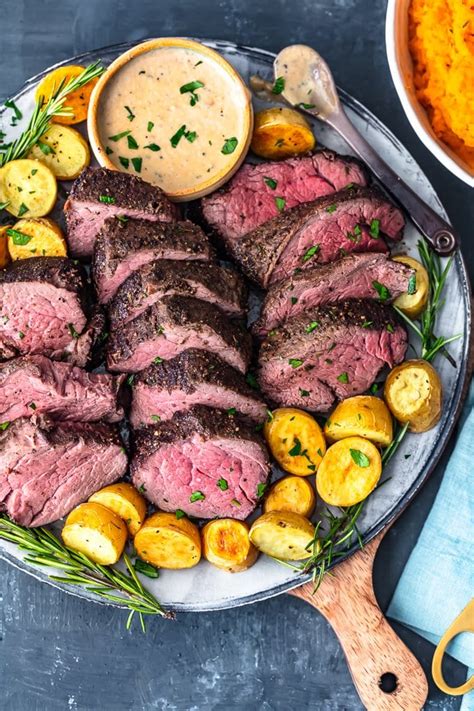The Best Beef Tenderloin Recipe: A Guide to Perfection
Are you looking for the best beef tenderloin recipe that will impress your family and friends? Look no further! This comprehensive guide will walk you through every step, from selecting the perfect cut to achieving that mouthwatering, melt-in-your-mouth tenderness. We’ll cover everything you need to know to create a beef tenderloin that's worthy of any special occasion.
Selecting Your Beef Tenderloin
The foundation of any great dish lies in the quality of its ingredients. Choosing the right beef tenderloin is crucial. Look for a cut that’s:
- Uniform in color: A consistent, deep red color indicates freshness. Avoid cuts with discoloration or browning.
- Firm to the touch: A tenderloin that feels firm and springy is a good sign of quality. Avoid anything that feels mushy or slimy.
- Well-marbled (but not excessively): A little marbling adds flavor and juiciness. However, excessive marbling can make the meat tough.
Preparing the Perfect Beef Tenderloin
Before you start cooking, there are a few essential preparation steps:
1. Trimming the Silver Skin:
The silver skin, a tough membrane on the tenderloin, needs to be removed. Use a sharp paring knife to carefully peel it away. This will ensure even cooking and a more tender result.
2. Seasoning the Tenderloin:
Seasoning is key to maximizing flavor. A simple yet effective seasoning blend includes:
- Kosher salt: generously season all sides.
- Freshly ground black pepper: to taste.
- (Optional) Garlic powder: a touch for extra savory depth.
- (Optional) Onion powder: adds subtle sweetness and complexity.
Cooking Methods for a Juicy Beef Tenderloin
There are several ways to cook a beef tenderloin, each resulting in a slightly different texture and flavor profile. Here are two popular methods:
Roasting:
Roasting is a classic method that yields a beautifully browned and tender tenderloin.
- Preheat your oven to 425°F (220°C).
- Sear the tenderloin: In a hot skillet with a little oil, sear the tenderloin on all sides for about 2-3 minutes per side to create a flavorful crust. This step is crucial for locking in juices.
- Roast: Place the seared tenderloin in a roasting pan and roast for approximately 15-20 minutes for medium-rare, or longer depending on your desired level of doneness. Use a meat thermometer to ensure accuracy. The internal temperature should reach 130-135°F (54-57°C) for medium-rare.
- Rest: Once cooked, let the tenderloin rest for at least 10-15 minutes before slicing. This allows the juices to redistribute, resulting in a more tender and flavorful final product.
Pan-Seared:
For a quicker cooking method, pan-searing is a great option.
- Season and Sear: Generously season the tenderloin and sear it in a hot skillet with a little oil, ensuring to brown all sides.
- Reduce Heat: Once seared, reduce the heat to medium-low, and continue cooking to your desired level of doneness, using a meat thermometer to monitor the internal temperature.
- Rest: Let the tenderloin rest before slicing.
Serving Suggestions:
A perfectly cooked beef tenderloin is delicious on its own, but you can elevate it further with a few simple additions:
- Red wine reduction sauce: adds richness and depth of flavor.
- Roasted vegetables: Asparagus, potatoes, and Brussels sprouts are all excellent choices.
- Creamy mashed potatoes: the classic accompaniment.
Conclusion:
Mastering the art of cooking the perfect beef tenderloin takes practice, but with these tips and techniques, you'll be well on your way to creating a culinary masterpiece. Remember to choose high-quality ingredients, season generously, and use a meat thermometer to ensure perfect doneness. Enjoy!
